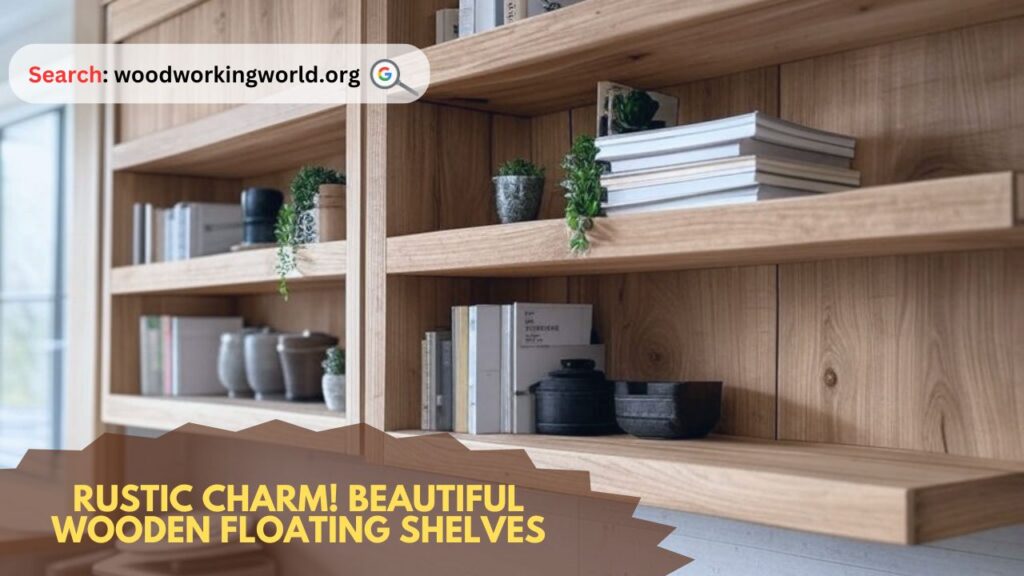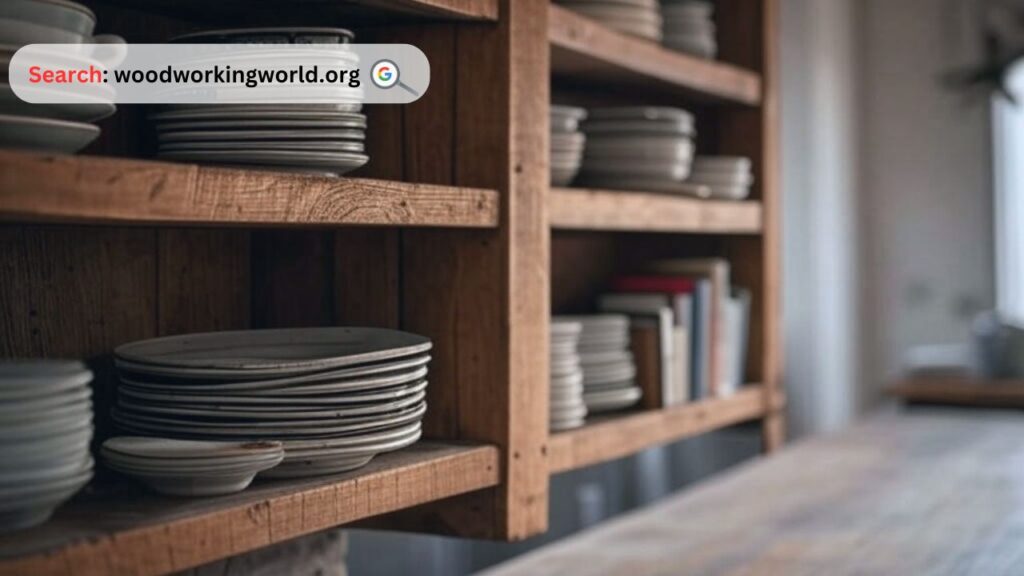Add rustic charm to your space with beautiful wooden floating shelves. Perfect for storage and décor, these stylish shelves bring warmth and character to any room.
Wooden floating shelves have become a staple in interior design, seamlessly blending functionality with aesthetic appeal. Their rustic charm adds warmth and character to any space, making them a popular choice for homeowners and designers alike. In this comprehensive guide, we’ll explore the allure of rustic wooden floating shelves, provide a step-by-step process for selecting and installing them, present a comparison table of different wood types, highlight key considerations, share an inspiring quote, and address frequently asked questions to enhance your understanding.

The Allure of Rustic Wooden Floating Shelves
Rustic wooden floating shelves offer a unique blend of natural beauty and practical utility. Their minimalist design creates an illusion of space, making rooms appear larger and more open. The natural textures and grains of wood introduce an organic element, adding warmth and a sense of history to modern interiors.
Beyond aesthetics, these shelves are highly functional. They provide storage solutions without occupying floor space, making them ideal for small apartments or rooms with limited space. Whether used to display cherished collectibles, store books, or organize kitchen essentials, rustic wooden floating shelves enhance both the form and function of a room.
Build 16,000+ Projects with Step-by-Step Plans—No Big Workshop or Costly Tools Needed! Start Now!
Step-by-Step Guide to Selecting and Installing Wooden Floating Shelves
1. Determine the Purpose and Location
- Assess Your Needs: Identify what items you plan to place on the shelves. This will influence the size, depth, and weight capacity required.
- Choose the Location: Select a wall area that complements your room’s layout and receives appropriate lighting. Ensure there’s enough space for the shelves and the items you’ll display.
2. Select the Appropriate Wood Type
Different woods offer varying aesthetics and durability. Consider the following options:
- Pine: Lightweight with a pale finish; budget-friendly but less durable.
- Oak: Sturdy with a prominent grain; offers a classic look.
- Walnut: Rich, dark tones with a smooth finish; premium choice with high durability.
- Reclaimed Wood: Eco-friendly with a weathered appearance; each piece is unique.
3. Measure and Plan
- Determine Dimensions: Measure the length, depth, and thickness of the shelves based on the items you’ll place and the available wall space.
- Plan the Layout: Sketch the desired arrangement, considering the spacing between shelves and alignment with existing furniture or architectural features.
4. Gather Necessary Tools and Materials
- Tools: Level, drill, stud finder, measuring tape, screwdriver, and pencil.
- Materials: Selected wood boards, brackets (if not using hidden supports), screws, wall anchors, sandpaper, and finish (stain or sealant).
5. Prepare the Shelves
- Cut to Size: If not pre-cut, saw the wood to your desired dimensions.
- Sand the Surface: Smooth all surfaces and edges to prevent splinters and prepare for finishing.
- Apply Finish: Stain or seal the wood to enhance its appearance and protect against moisture and wear.
6. Install the Shelves
- Locate Studs: Use a stud finder to identify wall studs for secure mounting.
- Mark Positions: Mark the desired height and horizontal placement on the wall, ensuring level alignment.
- Attach Supports: Depending on your design, install brackets or hidden supports into the wall studs.
- Mount Shelves: Place the shelves onto the supports, ensuring they are level and securely fastened.
Expert tips on Woodworking 🌿📦 Watch now!

Comparison of Wood Types for Floating Shelves
| Wood Type | Appearance | Durability | Cost |
|---|---|---|---|
| Pine | Light color, subtle grain | Moderate | Affordable |
| Oak | Medium to dark tone, prominent grain | High | Moderate |
| Walnut | Dark brown, smooth texture | High | Premium |
| Reclaimed Wood | Varied weathered look | Varies | Varies |
Key Considerations
- Weight Capacity: Ensure the chosen wood and mounting method can support the intended load.
- Wall Type: Different wall materials (drywall, plaster, brick) require specific anchors and screws.
- Environmental Factors: Consider humidity and temperature fluctuations, which can affect wood over time.
- Aesthetic Cohesion: Match the shelf design and finish with your existing decor for a harmonious look.
Inspirational Quote
“Design is not just what it looks like and feels like. Design is how it works.” – Steve Jobs

Frequently Asked Questions (FAQs)
Q1: How much weight can floating shelves hold?
The weight capacity depends on factors like the type of wood, shelf dimensions, and mounting method. Properly installed shelves anchored into wall studs can typically support heavier loads. Always consult manufacturer guidelines or a professional for specific weight limits.
Q2: Can I install floating shelves on drywall without studs?
While it’s possible using wall anchors designed for drywall, mounting shelves into studs provides a more secure and weight-bearing solution. For heavy items, it’s advisable to anchor into studs.
Q3: How do I maintain and clean wooden floating shelves?
Regular dusting with a soft cloth keeps shelves clean. For deeper cleaning, use a damp cloth followed by a dry one. Avoid harsh chemicals that can damage the wood finish. Periodic re-sealing or polishing can help maintain their appearance.
Q4: Can floating shelves be used in bathrooms or kitchens?
Yes, but it’s essential to use moisture-resistant finishes to protect the wood from humidity and water exposure. Materials like teak or cedar,
Click To Order Teds Woodworking With A 60-Money-back Guarantee From – Official Website